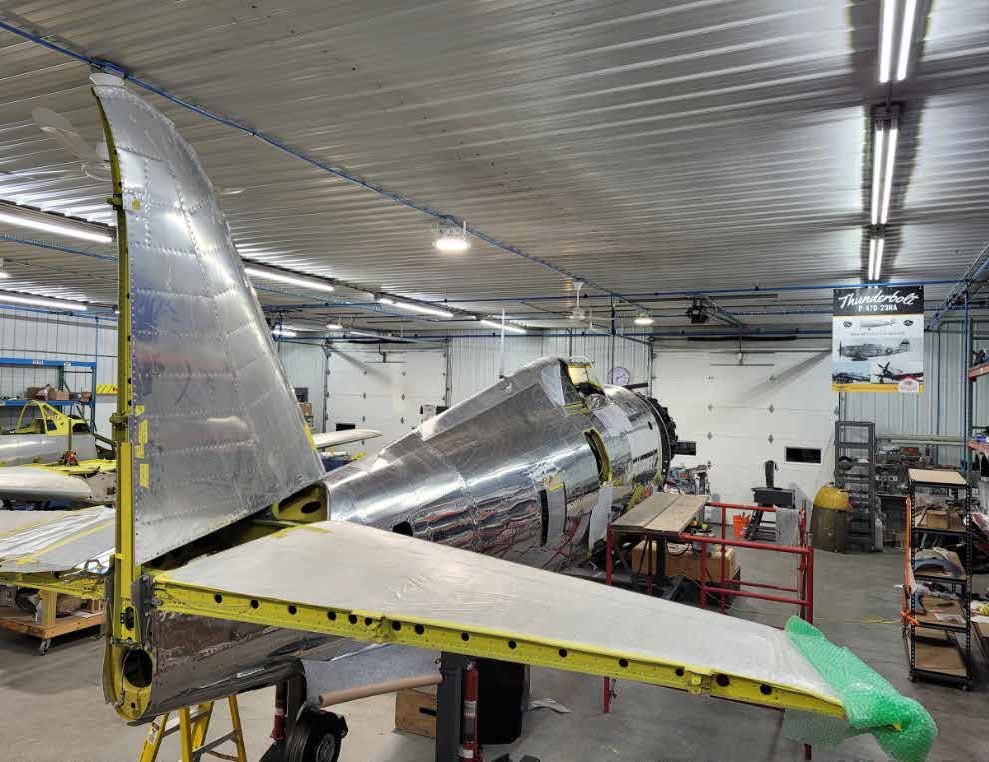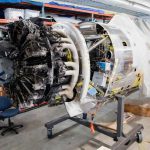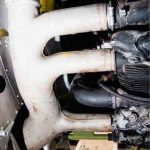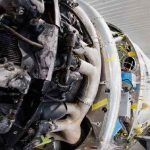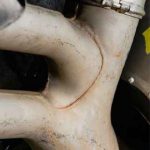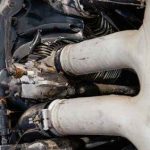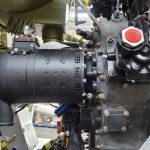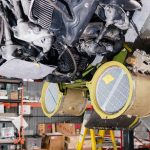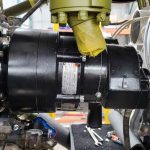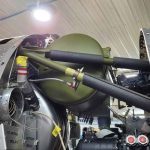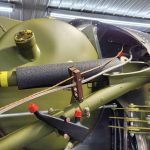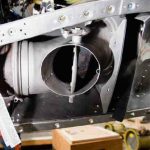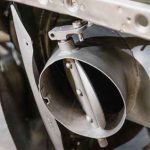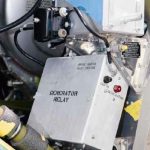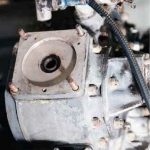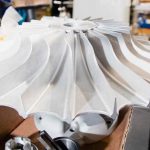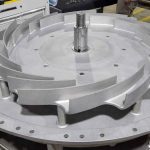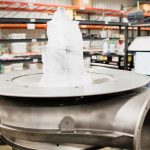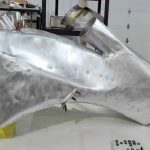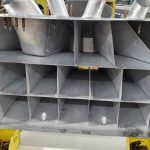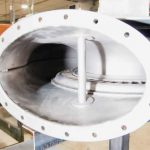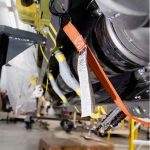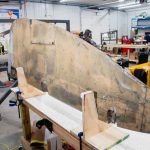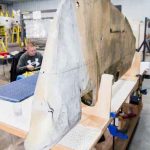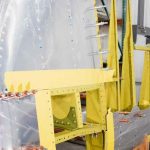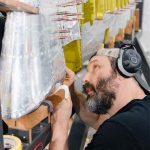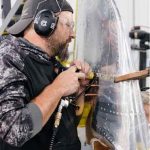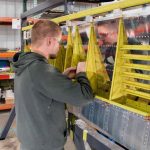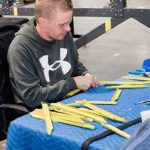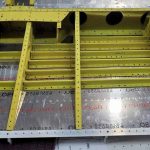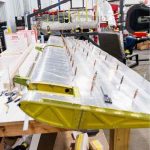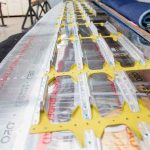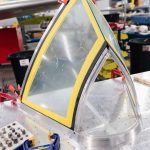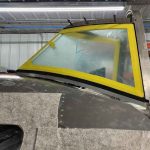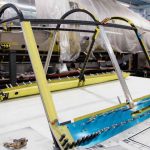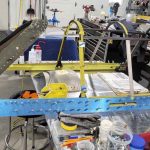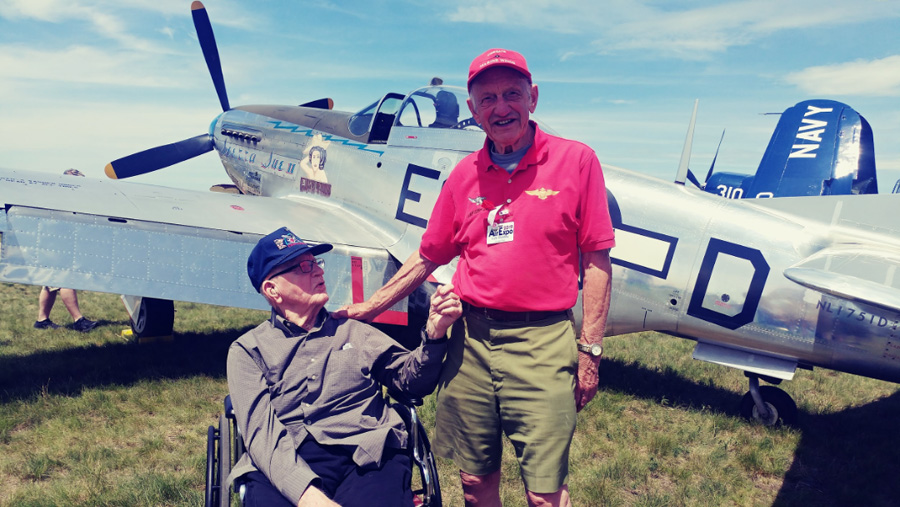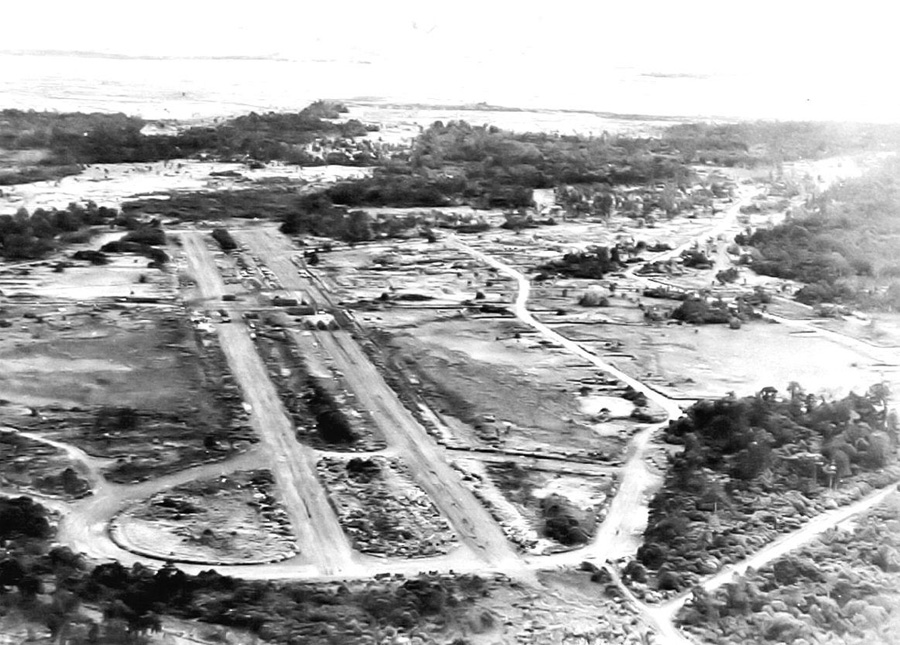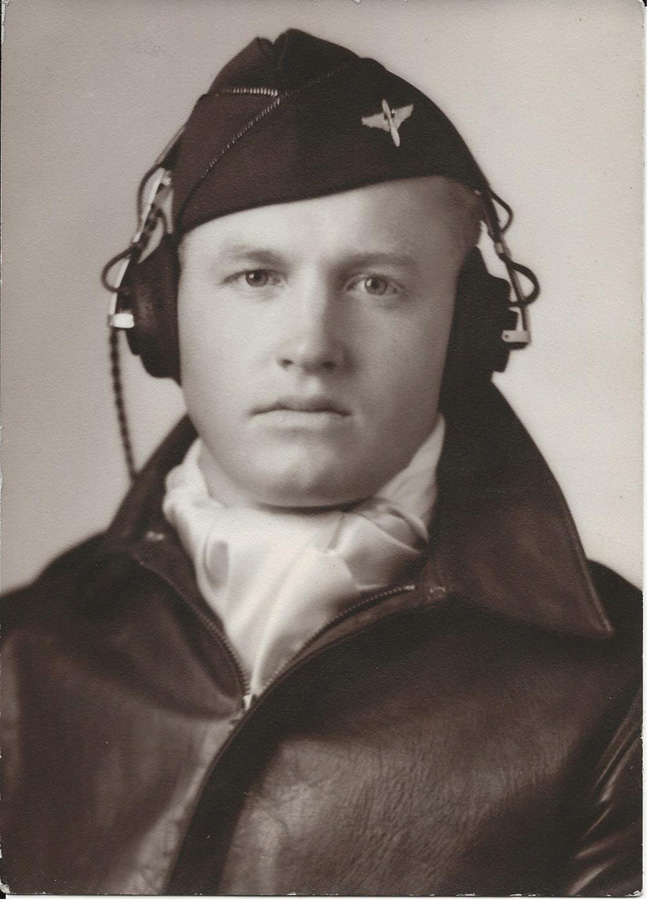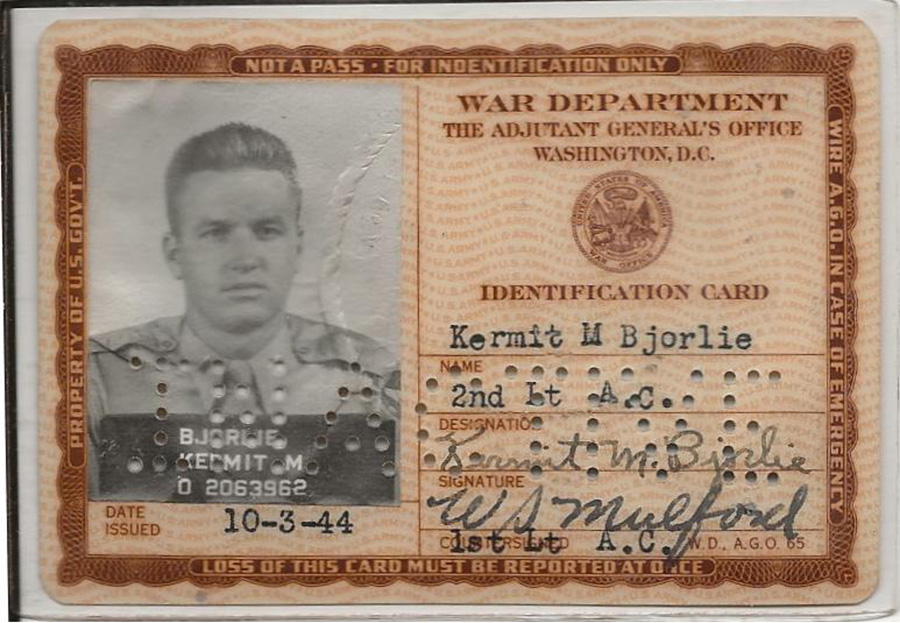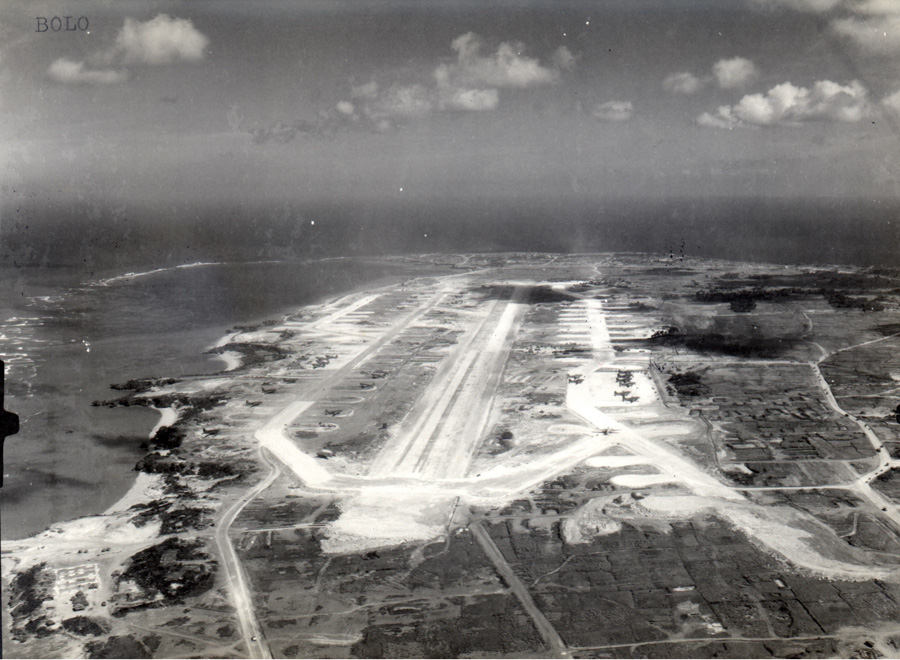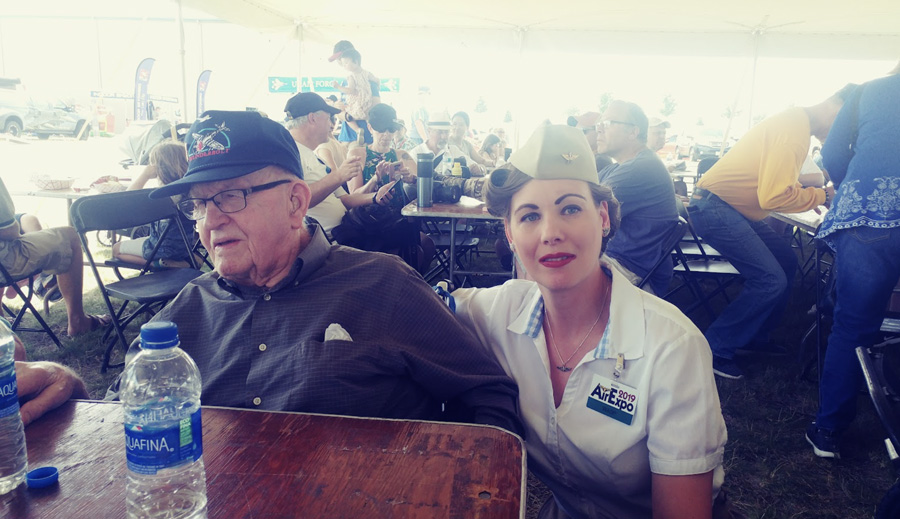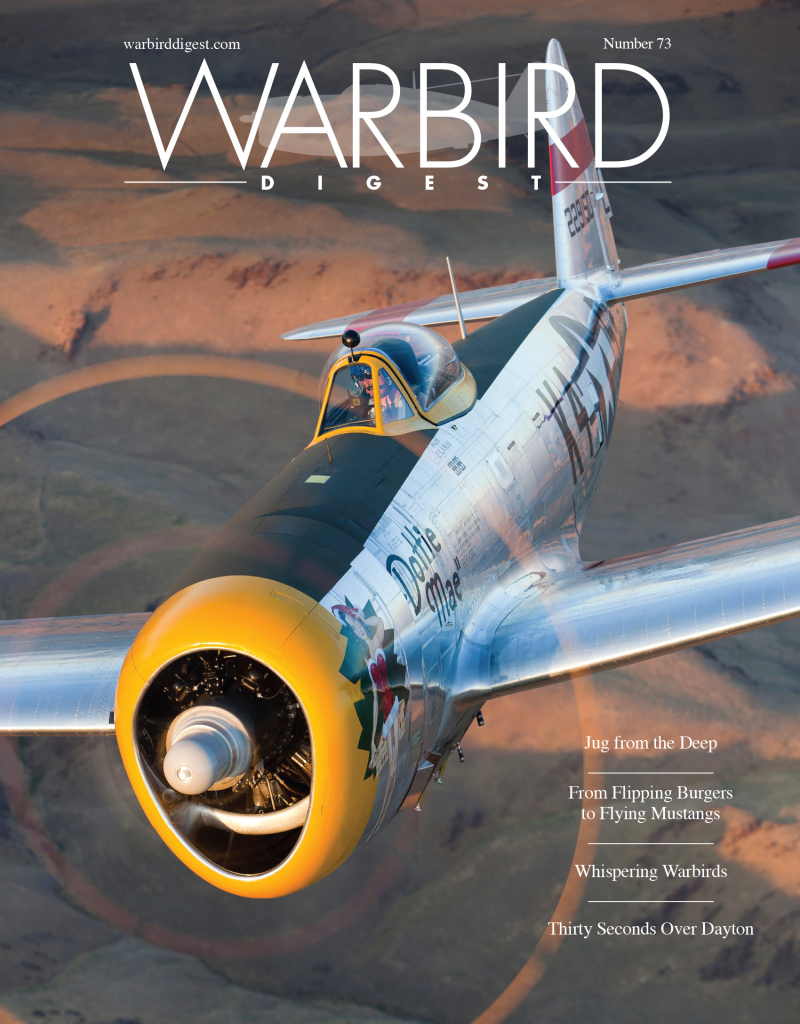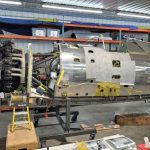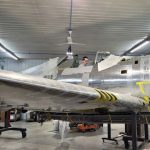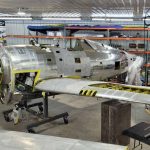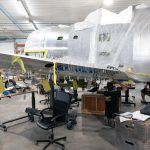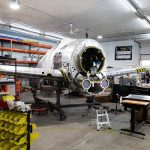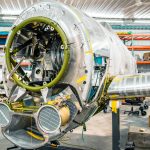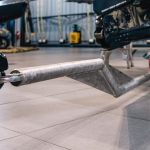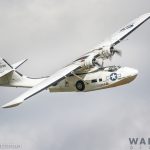Warbird Digest has received the September/October, 2021 report from Chuck Cravens concerning the restoration of the Dakota Territory Air Museum’s P-47D Thunderbolt 42-27609 at AirCorps Aviation in Bemidji, Minnesota. We thought our readers would be very interested to see how the project has progressed since our last article on this important project. So without further ado, here it goes!
Update
This month work progressed on the firewall forward area, turbosupercharger system, rudder, flaps, landing gear, and cockpit enclosure. We will also revisit our meeting with Kermit Bjorlie, WWII P-47 and P-51 combat veteran who passed away on December 1, 2021.
Firewall Forward
Much of the firewall forward work this month focused upon accessory installation and their associated control linkages.
Turbosupercharger System
Rudder
The rudder requires some complex skin forming, especially near the bottom as it fairs into the rear of the fuselage.
Flaps
Cory is making good progress on the flaps. Walkway stiffeners, lower skin support structure, and fitting of skin sections were all areas of progress this month.
Cockpit Enclosure
Work on preparing the cockpit enclosure for installation resumed, with progress on the windshield and sliding enclosure frames occurring this month.
Another Greatest Generation Pilot Leaves Us
As I write this update near the 80th anniversary of the attack on Pearl Harbor, it is hard not to think about those who paid the ultimate sacrifice for their country that day. At this time of year, it is also fitting to remember one of the Greatest Generation who recently passed. While not a Pearl Harbor survivor, Kermit Bjorlie served his country with honor, and we remember him fondly.
Kermit Manfred Bjorlie, 102, died peacefully in his sleep in Zumbrota, MN on December 1, 2021. He was a very kind, reserved, tough, and resilient (stubborn Norwegian) man who loved life and wasn’t ready to leave. He was interested in people and loved hearing their stories. He was a man of God, active in his church, and delighted in his family.1
In the summer of 2019, thanks to his son Jon, I had the great honor of meeting and interviewing Kermit Bjorlie. He graciously signed an access door of the Dakota Territory Air Museum’s P-47. It is a good time to revisit that event, and to remember Kermit’s story.
1 Excerpt from obituary, courtesy of Jon Bjorlie
Kermit Bjorlie Interview July 13th, 2019
I met Kermit and Jon Bjorlie during AirExpo at Flying Cloud Airport in Eden Prairie, Minnesota on Saturday July 13th, 2019.
At that time, Kermit, a veteran of the Southwest Pacific Theater in WWII was 100 years old. Kermit flew P-40s, P-47s, and P-51s during his training and his combat tour.
On April 3rd, 1919, Kermit Bjorlie was born on a farm in Pekin, about 95 miles northwest of Fargo, North Dakota. He graduated with a degree in Agricultural Engineering from North Dakota State University. Bjorlie took part in the Reserve Officer Training Corps (ROTC) program at NDSU, and enlisted in the U.S. Army Air Forces after graduating in February 1943, serving until 1946.
In April, 1945 the Army Air Forces sent Second Lieutenant Bjorlie to Nadzab, New Guinea for jungle flight familiarization. Enroute to Hawaii, somewhere over the Pacific, he learned of President Franklin D. Roosevelt’s death.
Nadzab Airport, located East of Nadzab Village, was the site of the only Allied paratrooper assault in New Guinea on September 5th, 1943. The airfield is about 26 miles west of Lae.
In the summer of 1944, the New Guinea campaign was rapidly coming to a close and westward movement to the Philippines was on the horizon. The 310th Fighter Squadron moved to Noemfoor, an island on the western end of Papua New Guinea, then on to Leyte in the Philippines and San Roque Airfield, on November 18th, 1944. Island hopping was the nature of the war at that stage. By December 22nd, 1944, the 310th was at McGuire Field, Mindoro, Philippines. On April 8th, 1945, the squadron moved on to Porac Airfield, Luzon, Philippines.
Lt. Bjorlie was assigned to the 310th Fighter Squadron when it was stationed at Porac, and there he flew his first combat missions – “Flying over jungles and getting acquainted with what we had to put up with moving down.”
His daughter, Carol O’Neill, said he flew the P-47 Thunderbolt on combat missions, giving support to U.S. forces fighting the Japanese in the Cagayan Valley hills.
As the war moved closer and closer to the Japanese home islands, Bjorlie and the 310th ended up on the Bolo Strip in Okinawa, flying five to six hour missions over southern Japan looking for ‘targets of opportunity’.
Bjorlie told me that the P-47 was his favorite of the three fighters he flew – it was large, strong, and carried a heavy load of fuel, ammunition, and bombs. In fact, he credits the P-47 with saving his life. Bjorlie recounted flying a mission from Okinawa to Kyushu where he had to attack a Japanese destroyer making fast “S” turns tight against a coastal cliff. He dive-bombed the destroyer, and as he pulled out of his attack, he passed low over the top of a cliff where an enemy anti-aircraft battery was camouflaged in a shack near its edge.
Lt. Bjorlie heard the enemy shells hit the bottom of his plane and then saw shrapnel holes appear in his wing. He turned and flew back toward the water, not wanting to crash on land occupied by Japanese troops. He figured his odds of survival were better on the ocean, and that he might be picked up by the Navy.
As he evaluated his fighter’s condition, he reckoned that the self-sealing fuel tanks had worked as advertised and that his P-47 was handling normally. He would therefore try to make it back to Okinawa with his squadron-mates.
It had to be a great relief to spot his home field after the long overwater flight in a battle damaged P-47, but he did, and landed successfully. In his Forest City Summit interview, Kermit stated “I never did see the airplane again. I think it was taken into the repair depot because it had too much damage.” He also observed that this was his closest call during his military flying career.
On Okinawa, Kermit recalled surviving the typhoon which hit the Third Fleet east of Okinawa on June 2nd and 3rd, 1945. That storm produced 50-to-60 foot seas, 115 mph sustained winds, and gusts of up to 150 mph. Thirty three ships received damage and 76 airplanes were destroyed, mostly on aircraft carrier flight and hangar decks when the airplanes broke free of tie-downs.
Lt. Bjorlie weathered the typhoon in a Japanese cemetery, crouching under half a tent (shelter half) spread over and tied down to burial urns. He said that planes at his airfield were lifting off and “flying” on their tie downs.
As Kermit recounted his wartime flying career, he got a bit emotional when he told me that one of the saddest moments occurred following a ferry flight to take the 310th’s war-weary P-47s to Clark Field. On the way, the squadron hit towering cumulus clouds and had to “climb to daylight”. But once he landed, he found it hard to hand over his beloved Thunderbolt – an aircraft which had brought him through the fight unscathed.
And that’s all for this month. We wish to thank AirCorps Aviation, Chuck Cravens for making this report possible! We look forwards to bringing more restoration reports on progress with this rare machine in the coming months. Be safe, and be well







